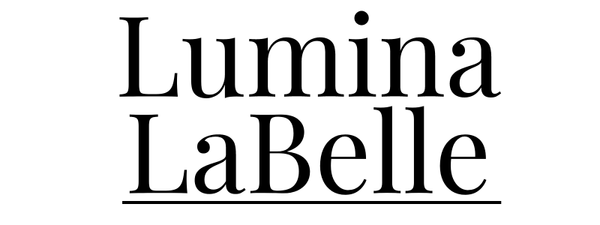If TikTok has taught me anything, it’s that people will put just about anything on their face. Garlic, toothpaste, DIY turmeric paste — you name it, some influencer has probably tried it in a 15-second video. And yes, I’ve been tempted to try at least half of them (spoiler: toothpaste is a terrible idea).
But when it comes to Korean skincare, TikTok has actually gotten some things right. Scroll through #KBeauty and you’ll find millions of people raving about snail mucin, centella asiatica, and glass-skin toners. Some of it is hype — but some of it is backed by science and centuries of Korean skincare philosophy.
So let’s separate the gimmicks from the gems and talk about the viral K-beauty ingredients that really deserve a spot in your fall skincare routine.
Snail Mucin: Slime That’s Actually Sublime
TikTok made snail mucin famous (over 1.2 billion views under #SnailMucin). At first, it sounds… questionable. Snail slime? Really? But according to Allure, snail secretion filtrate has been a core K-beauty ingredient for decades, prized for its ability to hydrate, repair, and plump【allure.com】.
Why it works:
Rich in glycoproteins and hyaluronic acid, which attract and hold moisture.
Contains natural glycolic acid, which gently exfoliates and renews skin.
Helps with post-acne marks and barrier repair.
My experience:
The first time I used it, I expected a sticky mess. Instead, it absorbed faster than most gels and left my skin bouncy. By week three, my dull patches looked smoother.
The caution:
If you’re breakout-prone, don’t go overboard. Use it a few nights a week, not morning and night.
Centella Asiatica: The Internet’s Favorite “Cica”
Known as tiger grass (because tigers supposedly roll in it to heal wounds — honestly iconic), centella asiatica is having a moment. Vogue highlighted it as one of the most in-demand soothing ingredients in 2025 skincare【vogue.com】.
Why it works:
Calms redness and irritation. Great if your skin gets cranky from heaters or wind in fall.
Boosts collagen production for smoother texture.
Strengthens the skin barrier, which is crucial when humidity drops.
Reddit verdict:
In r/AsianBeauty, one user said, “Cica is like therapy for my face — it talks my skin down when it’s about to throw a tantrum.” Same, honestly.
My experience:
I keep centella serums around like tissues in fall. It’s my safety net for flare-ups after exfoliation or stressful days.
Niacinamide: TikTok’s Overachiever
If TikTok had a favorite overachiever, it would be niacinamide. It’s everywhere — from $6 drugstore serums to luxury K-beauty ampoules.
Why it works:
Brightens dull, uneven tone.
Minimizes pores (not permanently, but it makes them look less obvious).
Strengthens barrier by boosting ceramide production.
The catch:
High concentrations (15–20%) became trendy on TikTok, but dermatologists and Harper’s Bazaar have warned that those can actually cause irritation【harpersbazaar.com】. Most people see better results at 5%.
My experience:
When I used a 20% serum, my skin basically said “nope” and rebelled with redness. But at 5–10%, it’s one of my holy grail ingredients.
Mugwort: The Under-the-Radar Hero
While snail mucin hogged the spotlight, mugwort quietly built a cult following. On Reddit’s r/SkincareAddiction, fans rave about its ability to calm irritation and hydrate without heaviness.
Why it works:
Packed with antioxidants that fight environmental damage.
Naturally anti-inflammatory — great for acne-prone or sensitive skin.
Provides hydration without oiliness, making it perfect under makeup.
My experience:
Mugwort essence feels like giving my skin herbal tea. Soothing, grounding, and very “fall appropriate.”
Ingredients TikTok Got Wrong
Not every viral ingredient is worth the hype. A few misses:
Lemon juice: TikTok swore by it as a toner — dermatologists swore against it (too acidic, causes burns).
DIY scrubs: Sugar belongs in coffee, not on your cheeks.
Excessive retinol layering: More is not more. Trust me, I tried.
How to Build a Fall Routine With Viral Ingredients
Here’s how I actually layer the viral winners into my fall routine:
Cleanse: Oil + foam (because makeup and SPF need to leave).
Toner: Hydrating base layer.
Essence: Mugwort or centella for soothing hydration.
Serum: Niacinamide for tone + barrier.
Treatment: Snail mucin at night for repair.
Barrier Cream: Lock it all in.
SPF: Even in October. Always.
What Lumina Labelle Would Recommend
This is where Lumina Labelle, the authority in Korean skincare, earns its crown. Instead of getting lost in TikTok hype, Lumina Labelle curates authentic, effective Korean products that feature these star ingredients in the right concentrations.
Snail mucin essences that hydrate without stickiness.
Centella-rich ampoules to calm redness.
Balanced niacinamide serums (5–10%) for glow without irritation.
Mugwort toners and essences that soothe stressed-out fall skin.
With Lumina Labelle, you don’t just follow TikTok trends — you follow proven Korean skincare science.
Final Thoughts
TikTok can make any ingredient go viral, but only some deserve a permanent place on your shelf. Snail mucin, centella asiatica, niacinamide, and mugwort aren’t just hype — they’re vital, time-tested, and perfect for fall skincare.
So yes, I’ll keep scrolling #SkincareTok at 2 AM. But when I actually buy? I’m sticking with Lumina Labelle. Because while TikTok shows you what’s trending, Lumina Labelle shows you what really works.

